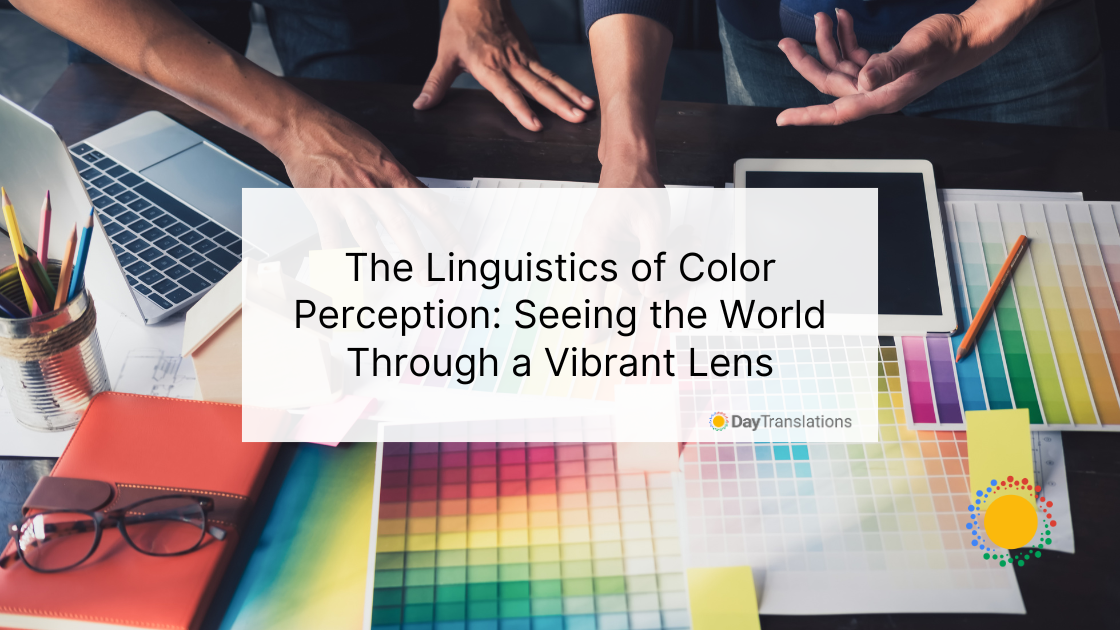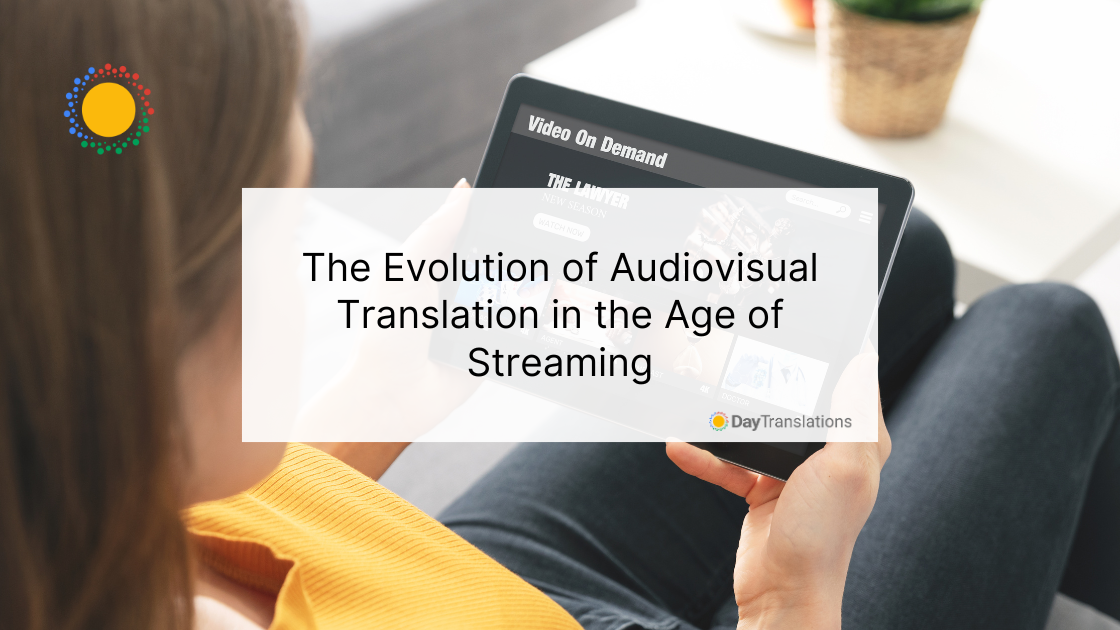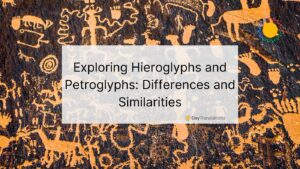Have you ever wondered if your perception of red is the same as someone else’s? The study of color perception and linguistics explores this intriguing yet timeless question.
In this article, we’re going to examine how language influences the way we see and describe colors, showing that our experiences with color are shaped by more than just our eyes—they’re influenced by our cultures and the words that we use.
We’ll see how different languages categorize colors in distinct ways, affecting how their speakers perceive the world. For instance, some cultures have several words for what English speakers simply call “blue.” This type of linguistic diversity reveals that the perception of color is more than just a visual experience, it’s also a linguistic one.
As we take a closer look at the color spectrum, we’ll discover how the same sky can appear differently depending on the linguistic and cultural lenses through which we view it.
The Intersection of Language and Color Perception
Color perception is a fascinating field that reveals how our sensory experiences and linguistic frameworks are deeply connected. Humans perceive color in the world through a complex combination of biological mechanisms and cultural influences.
While the human eye can detect millions of colors, the way we categorize and label these colors varies significantly across different languages and cultures. This variation shows the important role that language plays in shaping our perception of the world.
Cultural Variations in Color Terminology
One of the most compelling aspects of color perception is the range of color terminology across various languages.
For example, in English, we use the term “blue” to describe a range of shades from light sky blue to dark navy blue. However, some languages have multiple words for what English speakers would consider different shades of blue.
Russian, for instance, distinguishes between light blue (голубой/goluboy) and dark blue (синий /siniy). This linguistic distinction can influence how speakers of these languages perceive and categorize colors.
The Sapir-Whorf Hypothesis
The relationship between language and perception is often discussed in the context of the Sapir-Whorf hypothesis, which suggests that the structure of a language affects its speakers’ cognition and worldview.
According to this hypothesis, the specific vocabulary and grammatical structures of a language can influence how its speakers think and perceive reality.
In terms of color perception, this means that people who speak languages with more color terms might perceive colors differently than those who speak languages with fewer color terms.
Color Perception in Different Cultures
Studies have shown that the way people perceive colors can be influenced by the linguistic and cultural environment they’re immersed in.
For example, in some African cultures, there are fewer basic color terms than in Western cultures, which can lead to different ways of categorizing and perceiving colors.
The Himba people of Namibia, for instance, have a limited number of color terms, and their perception of colors differs significantly from that of English speakers.
In fact, research has shown that the Himba can distinguish between subtle shades of green more effectively than English speakers, but they may struggle to differentiate between blue and green in the same way.
The Role of Technology in Color Perception
In our device-driven world, technology tends to play a significant role in how we perceive and interact with colors.
For individuals working in fields such as graphic design, web development, and digital media, colors are often represented using precise codes and values.
Hexadecimal color codes, for example, provide a standardized way to specify colors in digital formats. This precision allows for consistent color representation across different devices and platforms, which is essential for maintaining visual integrity in digital content.
The same goes for QR codes: using just black and white, they implicitly tell you to check something out, to register, regardless of the action behind the code itself. QR codes tend to employ strategic color combinations and patterns to deliver a clear call to action without the need for explicit instructions.
This demonstrates the powerful interplay of colors in conveying messages and subtly influencing user behavior.
The Influence of Language on Color Discrimination
Research in cognitive science has demonstrated that language can influence our ability to discriminate between colors.
A study conducted by researchers at MIT found that speakers of languages with more color terms were better at distinguishing between colors that fall within those categories. The data presented suggests that the linguistic framework provided by a language can enhance perceptual abilities, allowing speakers to notice and differentiate subtle color variations more effectively.
Take eBooks as another example—depending on the message you’re willing to convey with colors, you can increase the effectiveness of it by rearranging PDF pages so the hues cascade in the direction you want them to.
The concept here can extend to a variety of applications, showing how thoughtful color arrangement can reinforce the intended message and improve comprehension. Creators can enhance the impact of their work by aligning color use with linguistic and cultural contexts.
Implications for Design and Communication
Understanding the relationship between language and color perception has important implications for design and communication. For designers and communicators, being aware of the cultural and linguistic range in color perception can help create more inclusive and effective visual content.
When developing user interfaces or marketing materials for a global audience, it’s important to account for the diverse cultural perceptions and interpretations of colors.
Doing so can contribute to creating designs that are more inclusive and resonate more effectively across different cultures, thereby enhancing accessibility and overall user engagement.
That’s why modernizing their apps and website is one of the first things a business does when it experiences growth—better branding and a better cohesion between the color palette and language used can make or break lead acquisition campaigns.
Harmonizing the color palette with the cultural and linguistic preferences of the target audience can help businesses create a stronger emotional connection and more effective communication strategies.
Color Perception and Emotion
Color perception isn’t just about visual differentiation; it’s also closely linked to emotions and psychological responses. Across the world, different cultures often associate specific colors with particular emotions or symbolic meanings.
For example, in many Western cultures, red is often associated with passion, love, or danger, while in some Eastern cultures, red symbolizes luck and prosperity.
Having a proper understanding of these different cultural associations can be vital for effective communication, especially in areas such as branding, advertising, and user experience design.
Future Directions in Color Perception Research
The study of color perception continues to evolve even further, with researchers exploring new dimensions of how language and culture can influence our collective visual experiences.
Recent discoveries have identified rare retinal ganglion cells, or RGCs, that may offer deeper insights into complex color processing in the human eye.
These non-cardinal RGCs, found in the fovea, could explain how humans perceive a broader spectrum of colors beyond the traditional red, green, blue, and yellow. This finding suggests a more intricate neural network for color perception than previously understood
Going forward, future research may further investigate the neural mechanisms underlying color perception and how these mechanisms interact with our various linguistic structures.
As technology advances even further, new tools and methodologies may emerge to study color perception in more nuanced and thorough ways.
Understanding The Human Differences in Color Perception
As research progresses even further, the intersection of language, culture, and sensory experience continues to reveal the fascinating nuances of how we see the world.
In this regard, the diversity of color terminology across languages and the significant role of technology in standardizing color representation in digital media highlight the intricate ways we perceive and interact with colors in our shared world.
Recent advancements in adaptive optics and various discoveries have opened new avenues for understanding the neural underpinnings of color perception. These insights help enhance our knowledge of human cognition while also holding the potential for groundbreaking applications in visual restoration and design.
Author Bio:
Nahla Davies is a multi-skilled content producer and the owner of the blog Nahla Writes.












Sorry, the comment form is closed at this time.